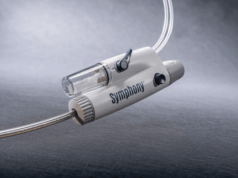
A study published in the Journal of the American Medical Association (JAMA) has found no difference in mortality rates between deep vein thrombosis patients treated with catheter-directed thrombolysis or anticoagulation alone. In the study, evidence of higher adverse events was noted in the catheter-directed thrombolysis group.
The study was conducted by Riyaz Bashir, Temple University School of Medicine, Philadelphia, USA, and colleagues.
“Deep vein thrombosis is a common cause of complication and death after coronary artery disease and stroke. Several small studies have suggested catheter-directed thrombolysis can reduce the incidence of post-thrombotic syndrome, which can impair quality of life for patients because of resulting pain, swelling and ulcerations. But catheter-directed thrombolysis is controversial with conflicting directives on its use because of inconclusive comparative safety outcomes,” the authors write.
The investigators examined in-hospital mortality, as well as secondary outcomes of bleeding complications, length of stay and hospital charges, in a group of 90,618 patients hospitalised for deep vein thrombosis from 2005 through 2010 as part of the US Nationwide Inpatient Sample database. They compared patients treated with catheter-directed thrombolysis plus anticoagulation with patients treated with anticoagulation alone.
Of the 90,618 patients hospitalised for deep vein thrombosis, 3,649 (4.1%) underwent catheter-directed thrombolysis. The catheter-directed thrombolysis utilisation rate increased from 2.3% in 2005 to 5.9% in 2010. In-hospital mortality was not significantly different between the catheter-directed thrombolysis and anticoagulation groups (1.2% vs. 0.9%). However, rates for blood transfusion, pulmonary embolism, intracranial haemorrhage and vena cava filter placement were higher among patients treated with catheter-directed thrombolysis. Patients in the catheter-directed thrombolysis group also had longer average lengths of stay (7.2 vs. 5 days) and higher hospital charges (US$85,094 vs. US$28,164) compared with the anticoagulation group.
“Since our results are based on observational data, our findings could be subject to residual confounding, which further highlights the need for randomised trial evidence to evaluate the magnitude of the effect of catheter-directed thrombolysis on outcomes such as mortality, post-thrombotic syndrome and recurrence of deep vein thrombosis. In the absence of such data, it may be reasonable to restrict this form of therapy to those patients who have a low bleeding risk and a high risk for post-thrombotic syndrome, such as patients with iliofemoral deep vein thrombosis.”









